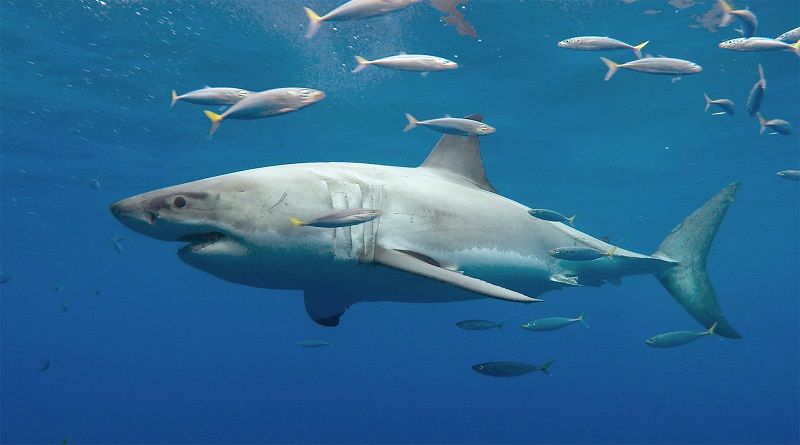Scientists to shed light on the status of sharks, big cat, other animal species in international trade
Ensuring the sustainable management of animal species hinges on robust scientific collaboration. To determine if international trade of a species listed in the Appendices of the Convention on International Trade in Endangered Species of Wild Fauna and Flora (CITES) is sustainable, policymakers rely on comprehensive data from legal trade records and scientific analyses from experts in the field. For harvest and international trade in marine species, CITES works with fisheries authorities in developing evidence-based solutions that balance conservation and community needs. Such technical cooperation forms a crucial basis for global decision-making to safeguard the survival of CITES-listed species of fauna in the wild.
On 12-19 July 2024, the 33rd meeting of the CITES Animals Committee (AC33) will convene scientific experts to discuss the status in international trade of African carnivores, pangolins, sharks, amphibians, songbirds, and marine ornamental fishes, among other species. To date, 76 Governments and 88 observer organizations have registered for the meeting, with a total of 483 individuals expected to participate in the meeting’s discussions.
In this final meeting before the 20th meeting of the CITES Conference of the Parties (CoP20) in 2025, the CITES Animals Committee will cover over 50 agenda items related to its core work and the specific tasks given to it by the previous CITES CoP at its 19th meeting (CoP19) in 2022. The tasks included reporting on the mismatch in data on sharks in trade and assessing and developing guidance for a wide range of wild and captive-bred animal conservation and trade matters.
CITES Secretary-General Ivonne Higuero said: “Scientific dedication to the sustainability of trade in CITES-listed animal species forms the foundation of our decision-making. The exchanges facilitated at this meeting will provide essential guidance for CITES Parties to design science-informed policies that will transcend borders, cultures, and economies, benefitting both people and nature.
The outputs from several workshops will be discussed. Guidance from the workshop on aquatic species listed in the Appendices and Non-Detriment Findings (NDFs) for specimens of Appendix II species taken from areas beyond national jurisdiction will shed light on how to go about assessing sustainability of species taken from the high seas. Workshop findings on the conservation and management of specimens of non-CITES-listed songbirds, marine ornamental fishes and amphibians that may be in trade (i.e., those not included in the CITES Appendices) will also be considered.
The Joint CITES-Convention on the Migratory Species of Wild Animals (CMS) African Carnivores Initiative (ACI) will update the Committee on the results of their discussions aimed at strengthening the effective implementation of the Convention for CITES-listed carnivores covered by the ACI: cheetah (Acinonyx jubatus), African lion (Panthera leo) and leopard (Panthera pardus). Possible activities going forward include the development of trade resource kits and an African lion database.
For the first time, trade in shark species will be considered in the Review of Significant Trade (RST). This process will initiate discussions around the complexities of safeguarding species with populations that may be shared by multiple Parties and that have distinct conservation needs due to geographic or genetic differences.
Following up on species/country combinations that were selected for review at the previous Animals Committee meeting (AC32), the Committee will review information on the selected cases, identify those where the species concerned may be subject to unsustainable levels of international trade and make recommendations that the country concerned must implement. Where necessary, the Committee will then formulate draft recommendations and other advice for consideration by the CITES Standing Committee at its next meeting in February 2025.
The Committee will also discuss responses received from countries selected for review under the Review of trade in animal specimens reported as produced in captivity, for frogs, tortoises and others species.
Updates on the activities pertaining to the role of CITES in reducing the risk of future zoonotic disease emergence associated with international wildlife trade will be on the agenda. This includes the new agreement between the World Organisation for Animal Health (WOAH) and the CITES Secretariat to cooperate and collaborate on various matters including the safe, traceable and legal international trade of wildlife and identifying zoonotic disease risk associated with CITES activities and CITES-listed species.
A joint session of the CITES Animals Committee and the CITES Plants Committee will be held on 12-13 July 2024 for the review of matters relating to both fauna and flora, such as the transport of live specimens, identification materials and NDFs. More broadly, both committees will review scientific aspects of the CITES Strategic Vision 2021-2030, the Kunming Montreal Global Biodiversity Framework and the Intergovernmental Science-Policy Platform on Biodiversity and Ecosystem Services (IPBES) Report on the Assessment of the Sustainable Use of Wild Species.
First established in 1987 at the 6th meeting of the CITES Conference of the Parties (CoP6) in Ottawa, Canada, the Animals Committee is tasked with providing technical and scientific guidance to the Parties, the Standing Committee and the extended CITES community, in support of the Convention’s contributions to the long-term conservation and sustainable use of the more than 6,610 animal species and sub-species whose international trade is currently regulated by CITES.




